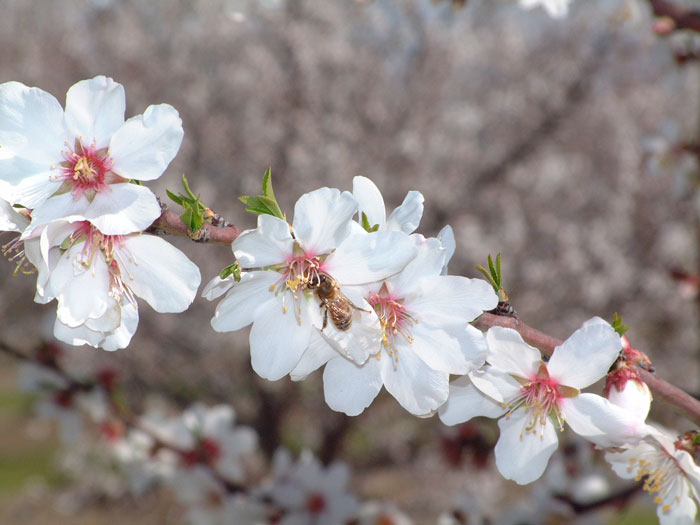
While the long, dry, and warm spell in the Central Valley of California this winter is worrisome for growers, it is providing a good start for almond pollination season.
And, thanks to a program called Seeds for Bees, honey bees delivered for pollination services to some orchards are finding nutritious forage before almond trees bloom. The aim of Project Apis m. is to help build healthier honey bee hives that are stronger at the end of the pollination season.
Billy Synk at Seeds for Bees says planting cover crops in or near almond orchards to provide supplemental forage for bees is a growing trend. Depending on the year and the location, around 6,000 acres are planted annually with cover crop seeds provided at no charge to growers. The seed mixes have been developed to provide floral diversity prior to and following almond bloom.
Apis m. has established acreage, seed mixes, suppliers, and planting regimes for use in all of California’s almond growing areas.
AIDS ORCHARD HEALTH
Planting cover crops in strips down the middles of orchard rows, or next to an orchard, is also gaining interest with growers and farm managers because of the benefits it provides to orchard health. Cover crops can help with water infiltration and retention in orchards with compacted soils.
Almond growers who plant cover crops are also adding a free source of nitrogen to their soil. Depending on the strength of the stand, and whether the crop is mowed or disced in, growers are getting 15 lbs. to 84 lbs. of nitrogen per acre from the cover crop alone.
Cover crops are not feasible in all almond growing areas every year, Synk notes. Some may need to be irrigated up when rainfall is insufficient for growth. In the southern San Joaquin Valley growing region, he says, mustard might work if planted early. It is more difficult to establish a good stand there, he notes, and would not recommend it where drip irrigation is used.
Cover crops planted late fall or early winter will need less water to make a good stand, Synk says. This is also the time weed species can gain a foothold on orchard floors that have not been treated with pre-emergent herbicides. While weeds can have some of the characteristics of a cover crop, it was proven in a cover crop study that they could use more water than even a clover-based cover crop.
TEMPERATURE CONCERN
University of California Farm Advisor Danielle Lightle says most of the cover crops she sees in almonds are on non-bearing acres.
A big concern with cover crops in northern growing areas is that they can add to a temperature drop in a frost event. Cover crops in mature orchards are generally planted around field margins or in adjacent fields. Growers have been asking about using cover crops, Lightle says. Their concerns include added weed pressure, need for winter irrigation in dry years, and rodents.
There has been concern that blooming cover crops would keep bees from performing their pollination duties in almond trees. According to Apis m., when almonds are blooming, bees are more attracted to those blooms because they provide large quantities of high protein pollen that is easier to access. Pollen from the cover crop mixes, while handy for supplemental food, is less accessible.
According to Apis m. research, providing cover crop forage for bees prior to almond bloom can increase the frames per hive. Synk says the pollen gathered prior to almond bloom triggers reproduction processes in the hive. Pollen collection stimulates the queen to lay eggs, which motivates the bees to collect more pollen to feed the brood.
About the Author(s)
You May Also Like




